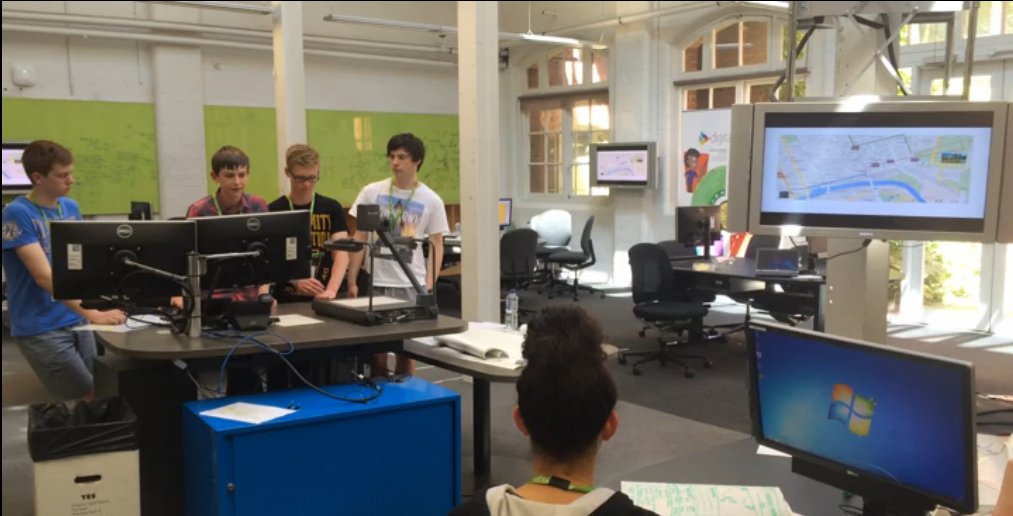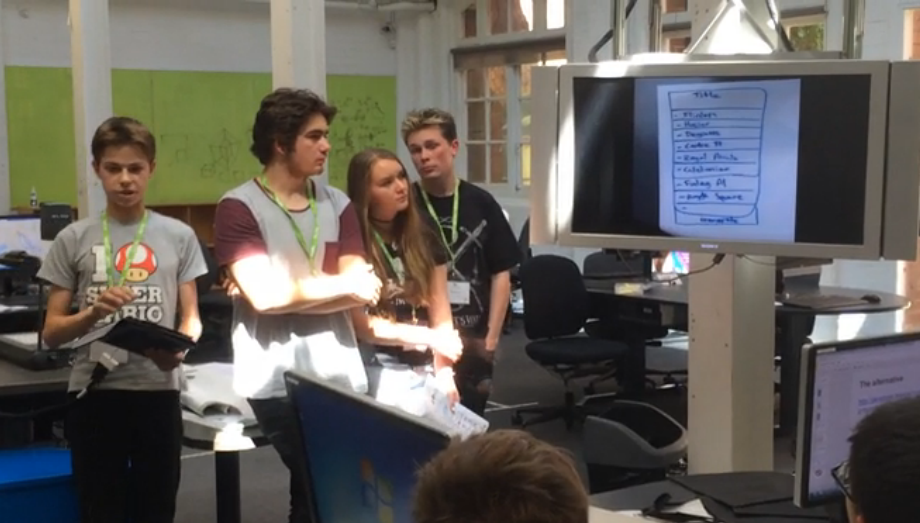This weeks blog post is written by Thomas Hilder, Year 9 student at Warragul Regional College.
On Friday 31 October, 25 students from 4 Victorian schools participated in the Schools Hackathon, presented by NICTA and Digital Careers as part of Melbourne Knowledge Week 2014, and hosted by the University of Melbourne. The schools involved included Lowanna College, Warragul Regional College, Kew High School, and Charles La Trobe P-12 College.
The Schools’ Hackathon is a unique workshop for high school students who want to turn their creative ideas into software and apps that can make a difference to the world. The Hackathon challenges students to create an app that solves a real problem facing the City of Melbourne.
Schools Hackathon provided a chance to try coding for a day in a relaxed environment supported by researchers/mentors from NICTA and the University of Melbourne.
At 6.30am, students from Warragul RC and Lowanna College headed off for Melbourne. On arrival we were introduced to the staff and mentors and presented with our goal to create a tour of Melbourne on a selected theme, and assigned groups with a mix of different skills. Each group was required to brainstorm ideas, and select one to bring to life, create a demo and then pitch it to the full group and a panel of experts. To encourage competition between the groups, prizes were offered for the best pitch and best hack, and judged on the following:
1. Impact – Would the application have real social impact? Can it change the world, or at least help someone in Melbourne? Does it solve a stated goal of the hackathon?
2. Innovation – Is the solution novel? Did it solve the problem in a creative or never-seen-before way?
3. Technical Achievement – Did it solve a hard technical problem? Did the group get a working demo completed within the allotted time?
At 9.30am we commenced our first activity by exploring data sets finding relevant information. Data sets include maps/tables displaying different types of information like public toilet locations and tourism numbers. We decided on a target audience and a theme for our tour. The group I was involved in chose art and environment, and targeted young adults.
We approached our task by first locating tram routes and maps of other relevant data like sculptures and gardens. We started to form a list of data to use in our tour, and from there formed ideas around the basic parts of the tour and the way it would work as an app. Next we designed ideas for pages of the app and how it could be navigated, and started to mark out key locations on a physical map.
After morning break, we broke our group in two. Tom and I started to work on the app design, whilst Hayden and Brad worked on the tour design. This helped us in starting to make an app prototype in ‘pop’, a very cool app that lets you take photos of drawings to place hyperlinks on them and simulate an app. This is actually the coolest app ever.
Before lunch we took a break from creating our app creation to watch a robotics demo. Two 1.5 feet tall robots danced with some success, although they fell over a few times. They also tracked sound and movement, and followed Hayden around for a while. Interestingly, since they looked sort of human you could feel sympathy for them when they fell. I want one!
After lunch we were treated to a tour of the University of Melbourne campus. We walked around the campus and looked at some of the amazing architecture, and were told that it is very similar to Oxford.
We then returned to finish designing our app prototype. It had a lot of pages and was getting complex at this point. This app could be a real thing ….I think, anyway. After this, we finished the main parts of the app and started finalising and debugging the app. At this stage we were all feeling pretty accomplished and excited. This was fun!
Our group finished early, and had the opportunity to look at some of the other teams’ work. Actual apps were being built, routes were being planned, and every group did something different. This was a very cool experience.
At the end of the day, we presented our app to the group and watched everyone else’s presentations. All the presentations were really interesting, and we all got so much out of the day. Kew High School will be returning to school to code their app and possibly use it for school projects next year. Warragul and Lowanna teachers will be sharing the experience within their network and looking at possibilities for extending the program.
When the ‘people’s choice winners were announced, we were excited to hear that our app won the award. Overall, it was a great day!
NICTA is Australia’s largest information and communications technology (ICT) R&D centre. It pursues high-impact, original research that is inspired by real-world challenges. NICTA is also the national coordinating body for the Digital Careers program and a critical training ground for future ICT researchers. This event is presented by NICTA as part of Melbourne Knowledge Week 2014



